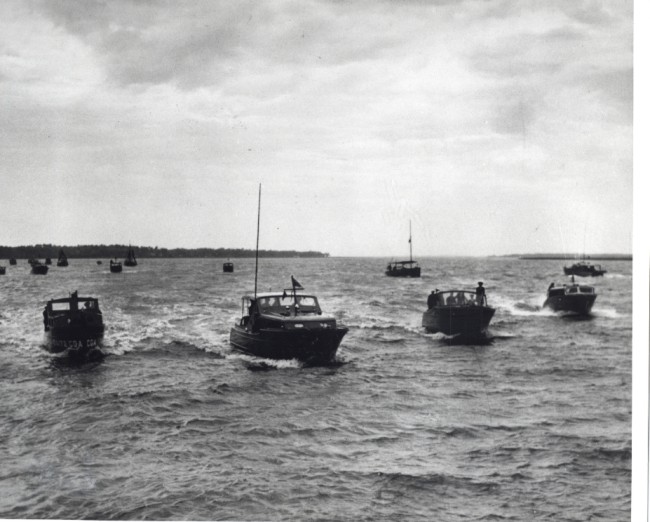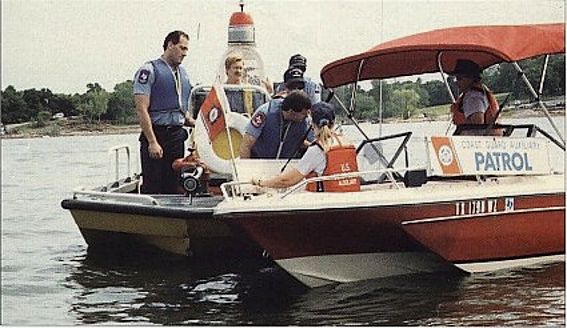History of the Auxiliary
When the Coast Guard "Reserve" was authorized by act of Congress on June 23, 1939, the Coast Guard was given a legislative mandate to use civilian volunteers to promote safety on and over the high seas and the nation's navigable waters. The Coast Guard Reserve was then a non-military service comprised of unpaid, volunteer U.S. citizens who owned motorboats or yachts.
 Two years later, on Feb. 19, Congress amended the 1939 act with passage of the Auxiliary and Reserve Act of 1941. Passage of this act designated the Reserve as a military branch of the active service, while the civilian volunteers, formerly referred to as the Coast Guard Reserve, became the Auxiliary. So, February 19 is formally recognized as the birth of the Coast Guard Reserve while June 23 is recognized as the birthday of the Coast Guard Auxiliary.
Two years later, on Feb. 19, Congress amended the 1939 act with passage of the Auxiliary and Reserve Act of 1941. Passage of this act designated the Reserve as a military branch of the active service, while the civilian volunteers, formerly referred to as the Coast Guard Reserve, became the Auxiliary. So, February 19 is formally recognized as the birth of the Coast Guard Reserve while June 23 is recognized as the birthday of the Coast Guard Auxiliary.
When America entered World War II, 50,000 Auxiliary members joined the war effort. They guarded waterfronts, carried out coastal picket patrols, rescued survivors from scuttled ships and did anything else they were asked to do. Many of their private vessels were placed into service.
 After the war, Auxiliarists resumed their recreational boating safety duties. The Auxiliary's four cornerstones - Vessel Examination, Education, Operations and Fellowship - were established and remained the Auxiliary's pillars into the 1990s. Today the four cornerstones have been re-defined as Member Services, Recreational Boating Safety, Operations and Marine Safety, and Fellowship.
After the war, Auxiliarists resumed their recreational boating safety duties. The Auxiliary's four cornerstones - Vessel Examination, Education, Operations and Fellowship - were established and remained the Auxiliary's pillars into the 1990s. Today the four cornerstones have been re-defined as Member Services, Recreational Boating Safety, Operations and Marine Safety, and Fellowship.
The well-known Vessel Safety Check, a free examination available to any recreational boater, helps boaters ensure their craft complies with Federal boating regulations.
As for Education, the Auxiliary teaches boating safety to recreational boaters of all ages.
The Auxiliary operates safety and regatta patrols and is an integral part of the Coast Guard Search and Rescue team. Auxiliarists also stand communication watches, assist during mobilization exercises, perform harbor and pollution patrols, provide platforms for unarmed boarding parties and recruit new people for the Service.
Following passage of the Coast Guard Authorization Act of 1996, the Auxiliary assists the Coast Guard, as authorized by the Commandant, in performance of any Coast Guard function, duty, role, mission or operation authorized by law. In 2002, the U.S. Coast Guard including the Auxiliary was transferred from the Department of Transportation to the new Department of Homeland Security.